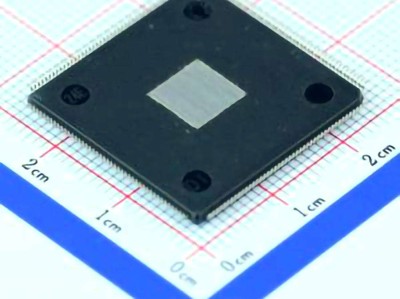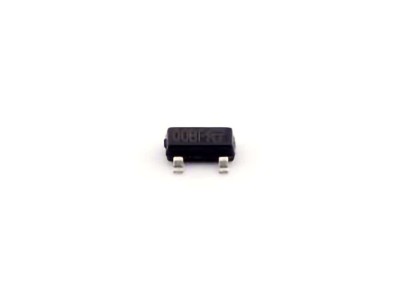
Introduction to BME680 and Its Role in Air Quality Monitoring
In today’s world, air quality is becoming an increasingly critical concern. As urbanization and industrialization continue to rise, so do the levels of pollution and other environmental hazards that can have severe implications on health, climate, and overall quality of life. However, technological advancements have given us the tools needed to monitor and manage air quality in real-time, providing much-needed data to mitigate these risks. One such breakthrough is the BME680, an integrated environmental Sensor that has proven to be invaluable for air quality monitoring.
What is the BME680?
The BME680 is a compact, multi-functional sensor designed by Bosch Sensortec that combines multiple environmental sensors into a single device. Unlike traditional air quality sensors that may only measure specific parameters, the BME680 is capable of monitoring a wide range of factors affecting air quality. It can measure temperature, humidity, pressure, and, most notably, gases such as volatile organic compounds (VOCs), carbon dioxide (CO2), carbon monoxide (CO), and other harmful air pollutants.
The BME680 sensor is based on advanced semiconductor technology and is designed to be highly accurate, reliable, and energy-efficient. It operates using a small footprint and can easily integrate with various systems, from personal monitoring devices to larger industrial networks. The sensor communicates with a host microcontroller or processor, providing data that can be analyzed to detect pollution levels, air composition, and environmental changes.
The Need for Air Quality Monitoring
Monitoring air quality is crucial for a variety of reasons, ranging from public health concerns to environmental sustainability. Poor air quality has been linked to numerous health issues, including respiratory diseases, cardiovascular problems, and even mental health disorders. Studies have shown that exposure to harmful pollutants like particulate matter (PM), carbon monoxide, nitrogen oxides, and VOCs can lead to long-term health complications and even premature death.
In response to this growing issue, governments, organizations, and individuals are turning to air quality sensors to monitor their environments. Traditionally, air quality monitoring was conducted in controlled, large-scale environments such as city-wide stations or industrial plants. These systems were expensive, bulky, and often limited to a few locations. However, with the advent of more sophisticated and cost-effective sensors like the BME680, real-time monitoring has become accessible on a much broader scale.
How BME680 Enhances Air Quality Monitoring
The BME680 sensor stands out for its ability to provide real-time, comprehensive environmental data. Here’s a look at some of its key features and how it enhances air quality monitoring:
Comprehensive Measurement
The BME680 is capable of measuring not just temperature, humidity, and pressure, but also key gases that contribute to air pollution, such as VOCs and CO. VOCs are organic compounds emitted by products such as paints, solvents, cleaning agents, and even household items like furniture. These can contribute to poor indoor air quality and have been linked to respiratory issues and headaches. The BME680’s ability to detect these compounds enables accurate tracking of air pollution levels in real time, helping users to understand and mitigate the risks.
Indoor and Outdoor Air Quality Monitoring
While many air quality monitoring systems focus on outdoor air, indoor air quality is just as important. In fact, studies have shown that indoor air can sometimes be more polluted than the air outside due to a lack of ventilation and the presence of VOCs from everyday household products. The BME680’s versatility allows it to be used in both outdoor and indoor environments, making it an ideal solution for households, offices, schools, and even industrial applications.
Real-Time Data and Smart Integration
One of the most significant advantages of the BME680 is its ability to provide real-time data. This immediate feedback enables users to take quick action to improve air quality. For example, if the sensor detects a spike in CO2 levels or the presence of harmful VOCs, users can adjust ventilation, open windows, or activate air purifiers. Moreover, the sensor can be easily integrated into smart home systems or environmental monitoring platforms, enabling automated responses based on sensor data.
Compact and Cost-Effective Design
The BME680’s small size and low power consumption make it an attractive option for a wide range of applications. Whether used in consumer-grade wearables, smart home devices, or large-scale environmental monitoring systems, the sensor’s compact design allows it to fit seamlessly into various devices. Furthermore, its cost-effectiveness means that it is an affordable option for both personal and commercial use, helping to democratize access to air quality data.
Predictive and Preventive Measures
The data provided by the BME680 can be used not only for immediate air quality assessments but also for predictive analysis. By monitoring environmental conditions over time, users can detect trends and patterns that may indicate potential issues, such as seasonal spikes in certain pollutants or changes in indoor air quality due to human activity. This predictive capability allows for proactive measures to prevent poor air quality, such as adjusting heating or cooling systems or increasing ventilation during peak pollution hours.
Applications of the BME680 in Air Quality Monitoring
The versatility and accuracy of the BME680 sensor have made it an essential tool in a variety of applications aimed at improving air quality and environmental sustainability. Let’s explore some of the most notable applications:
Smart Homes and Indoor Air Quality Management
In modern smart homes, air quality is becoming an important aspect of the overall living environment. The BME680 can be integrated into smart thermostats, air purifiers, and ventilation systems to monitor and adjust indoor air quality automatically. For example, if the sensor detects high levels of VOCs or CO2, the system can activate an air purifier or open a window to reduce concentrations. This not only improves health and comfort but also helps reduce energy consumption by optimizing ventilation and air purification efforts.
Wearable Health Devices
The BME680’s small size makes it ideal for integration into wearable health devices. These devices can continuously monitor the wearer’s environment, providing real-time feedback on air quality. For individuals with respiratory conditions such as asthma or allergies, this data can be life-changing. By alerting users to elevated levels of pollutants or allergens, wearable devices can help users avoid harmful environments and take preventative measures to protect their health.
Smart Cities and Urban Air Quality Monitoring
As cities become smarter, the need for comprehensive, real-time environmental monitoring systems grows. The BME680 sensor can be deployed across urban landscapes to collect air quality data from multiple locations. These sensors can be integrated into city infrastructure such as streetlights, transportation systems, and buildings, creating a network of real-time air quality data that can be used to identify pollution hotspots, inform policy decisions, and improve public health.
Industrial and Commercial Applications
Industries such as manufacturing, chemical processing, and agriculture often produce harmful gases and pollutants. The BME680 sensor can be used to monitor air quality in and around industrial sites, ensuring that workers are not exposed to dangerous levels of VOCs, CO, or other harmful substances. It can also help businesses comply with environmental regulations and reduce their carbon footprint by optimizing air quality control measures.
Environmental Research and Data Collection
Researchers studying air pollution and its effects on the environment can benefit from the BME680 sensor’s ability to provide high-quality, real-time data. The sensor can be used in field studies to monitor air quality in various regions, track pollution trends over time, and assess the impact of specific pollutants on ecosystems and human health.
Conclusion
As concerns over air quality continue to rise, the BME680 integrated environmental sensor is emerging as a vital tool in air quality monitoring. Its ability to measure multiple environmental factors and gases in real-time, along with its small size, cost-effectiveness, and ease of integration, makes it a game-changer for both personal and commercial applications. Whether used in smart homes, wearable devices, industrial settings, or urban air quality networks, the BME680 is paving the way for a more sustainable and health-conscious future.
Advancements in Air Quality Monitoring with BME680
The Technology Behind the BME680 Sensor
The success of the BME680 sensor can be attributed to its cutting-edge technology. It uses a highly sensitive metal oxide (MOX) sensor for detecting gases like VOCs and CO, which is a key part of its ability to monitor air quality effectively. MOX sensors operate by changing their resistance when exposed to certain gases. The BME680 sensor incorporates advanced algorithms to process these changes and provide accurate data on gas concentrations in the environment.
The sensor also uses a microelectromechanical systems (MEMS) sensor for measuring temperature, pressure, and humidity. MEMS sensors are tiny, highly precise devices that are commonly used in a range of applications, from automotive systems to consumer electronics. This combination of MEMS and MOX technology allows the BME680 to provide comprehensive environmental data with a high degree of accuracy.
Integrating the BME680 into Smart Systems
The integration of the BME680 into smart systems is one of the key factors driving the widespread adoption of this sensor. Smart home technology, in particular, has benefited from the sensor’s capabilities. Systems like smart thermostats and home automation platforms can use BME680 data to adjust air conditioning, heating, and ventilation in real-time. For example, a smart home system might use the sensor to detect a buildup of CO2 in a room and then automatically adjust the ventilation system to bring in fresh air.
In addition to smart homes, the BME680 is also being incorporated into IoT (Internet of Things) networks, allowing for large-scale, real-time environmental monitoring. IoT devices can collect and share data from BME680 sensors deployed in various locations, providing valuable insights into air quality trends and pollution hotspots.
Air Quality Index (AQI) and BME680
One of the most widely recognized tools for monitoring air quality is the Air Quality Index (AQI), which provides a standardized measure of air pollution based on the concentrations of various pollutants. The BME680 sensor can be used to calculate real-time AQI readings, making it easier for individuals and organizations to assess air quality quickly.
By measuring gases like CO, CO2, and VOCs, the BME680 can help determine an AQI value that reflects the overall air quality in a given environment. This data is crucial for urban planning, health initiatives, and even emergency responses to pollution events.
Health Implications and Public Awareness
The ability to monitor air quality in real-time can have significant implications for public health. As more people gain access to air quality data through consumer-grade devices and smart systems, public awareness of pollution levels is increasing. This heightened awareness empowers individuals to take action to protect their health, whether by avoiding polluted areas, using air purifiers, or making lifestyle changes to reduce exposure to harmful substances.
Conclusion: The Future of Air Quality Monitoring
The BME680 integrated environmental sensor is not just a tool for measuring air quality; it represents the future of environmental monitoring. By providing real-time, actionable data on a variety of pollutants and environmental factors, the sensor is helping individuals and organizations take proactive steps to improve air quality and protect health. As technology continues to evolve, the BME680 and similar sensors will play an even more important role in building sustainable, healthy environments for the future.
This concludes the two-part article on the applications of the BME680 sensor in air quality monitoring. With continued advancements in sensor technology, we can look forward to a future where monitoring and improving air quality becomes more seamless and accessible to everyone.
Partnering with an electronic components supplier sets your team up for success, ensuring the design, production, and procurement processes are quality and error-free.


